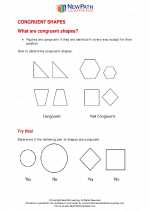Runoff
Runoff is the movement of water over the Earth's surface. This can occur when the ground is saturated or when rain, snowmelt, or other sources of water flow over the land. Understanding runoff is important for managing water resources and preventing flooding and erosion.
Factors Affecting Runoff
Several factors can affect the amount of runoff, including:
- Precipitation: The amount and intensity of rainfall or snowmelt can impact the rate of runoff.
- Soil Type: Soil with high porosity and permeability can absorb more water, reducing runoff.
- Slope: Steep slopes tend to produce more runoff, while flat terrain allows for slower water movement and absorption.
- Land Cover: Urban areas with impervious surfaces (e.g., concrete) produce more runoff than vegetated or natural landscapes.
Runoff Calculations
Mathematically, runoff can be calculated using the equation:
Runoff = Precipitation - Infiltration - Evapotranspiration - Storage
Where:
- Precipitation is the total amount of water from rainfall or snowmelt.
- Infiltration is the process of water seeping into the ground.
- Evapotranspiration is the combination of evaporation and transpiration from plants.
- Storage refers to any water that is retained on the surface or in depressions.
Study Guide
To understand runoff, it's important to review the following concepts:
- Define runoff and its significance in the water cycle.
- Identify the factors that affect the amount of runoff.
- Understand the mathematical equation for calculating runoff.
- Practice solving runoff problems using real-world scenarios.
- Explore the impact of runoff on the environment, including flooding, erosion, and water quality.
By mastering these concepts, you can develop a strong understanding of runoff and its implications for the environment and water management.
.◂Math Worksheets and Study Guides Fifth Grade. Congruent Shapes
Study Guide Congruent Shapes
Congruent Shapes  Worksheet/Answer key
Worksheet/Answer key Congruent Shapes
Congruent Shapes  Worksheet/Answer key
Worksheet/Answer key Congruent Shapes
Congruent Shapes  Worksheet/Answer key
Worksheet/Answer key Congruent Shapes
Congruent Shapes 

 Worksheet/Answer key
Worksheet/Answer key
 Worksheet/Answer key
Worksheet/Answer key
 Worksheet/Answer key
Worksheet/Answer key

The resources above cover the following skills:
Geometry (NCTM)
Analyze characteristics and properties of two- and three-dimensional geometric shapes and develop mathematical arguments about geometric relationships.
Identify, compare, and analyze attributes of two- and three-dimensional shapes and develop vocabulary to describe the attributes.
Explore congruence and similarity.